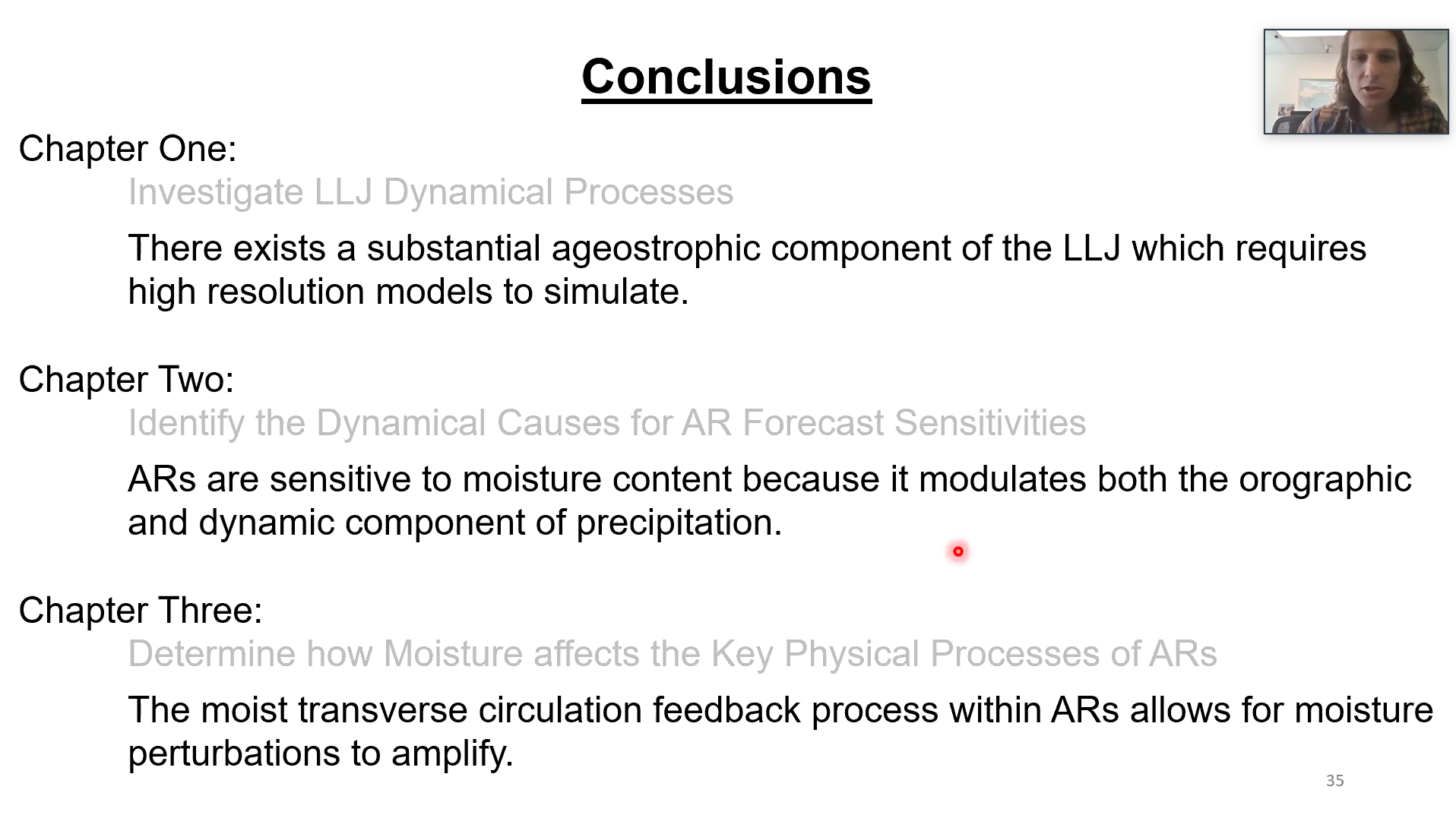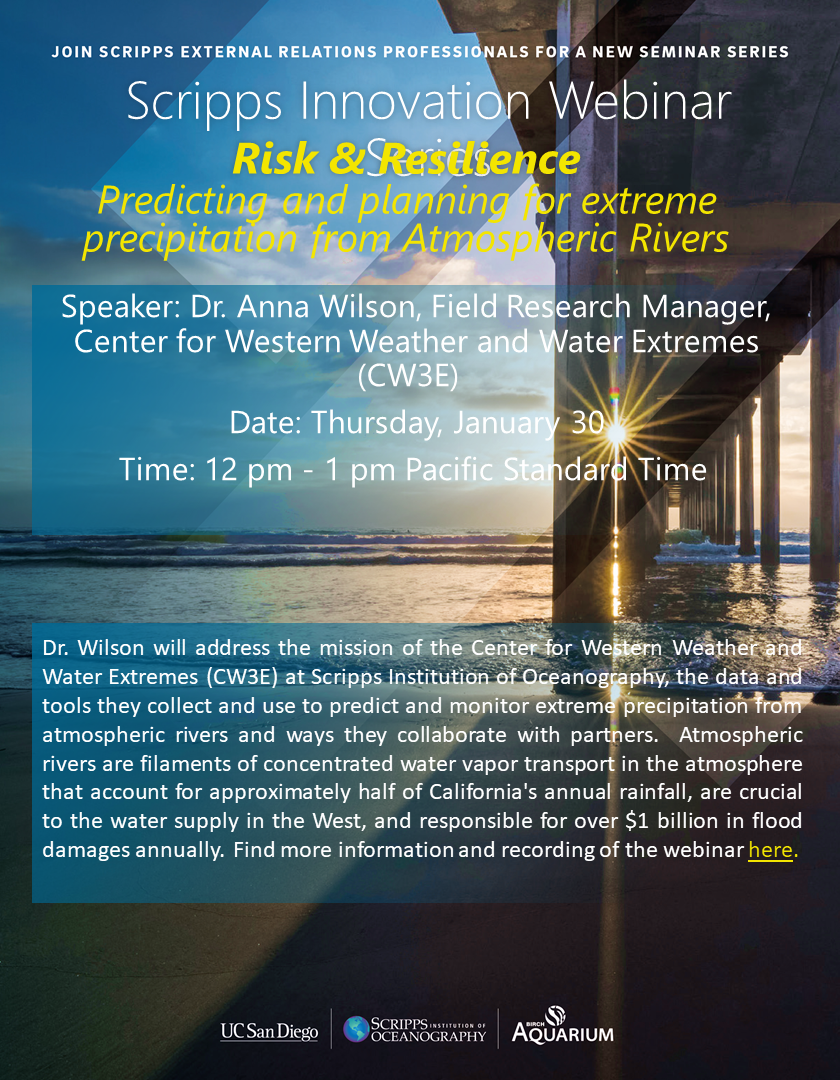CW3E Publication Notice
West Coast Forecast Challenges and Development of Atmospheric River Reconnaissance
May 13, 2020
CW3E Director and Atmospheric River Reconnaissance (AR Recon) Principal Investigator F. Martin Ralph, alongside coauthors including CW3E’s Forest Cannon, Anna Wilson, Minghua Zheng, Chad Hecht, Brian Kawzenuk, and Luca Delle Monache; Scripps Institution of Oceanography researchers Jennifer Haase and Luca Centurioni; NOAA/NWS/NCEP AR Recon Co-PI Vijay Tallapragada; NCAR collaborator Chris Davis; Naval Research Laboratory collaborators Jim Doyle and Carolyn Reynolds; ECMWF collaborators Florian Pappenberger, David Lavers, and Bruce Ingleby; University of Colorado Boulder collaborator Aneesh Subramanian; NWS Western Region collaborator Jon Rutz; and Plymouth State University collaborator Jay Cordeira, published a paper in the Bulletin of the American Meteorological Society titled “West Coast Forecast Challenges and Development of Atmospheric River Reconnaissance” (Ralph et al. 2020). This work is a part of CW3E’s ongoing effort to understand and improve the predictions of ARs and their impacts on public safety and water management, supporting local water agencies, California Department of Water Resources, NOAA and the U.S. Army Corps of Engineers.
AR Recon is led by the Center for Western Weather and Water Extremes and NWS/NCEP. The effort’s core partners include the Navy, Air Force, NCAR, ECMWF and multiple academic institutions (see Figure 1 for a schematic of the organizational structure). It is part of the “National Winter Season Operations Plan” to support improved outcomes for emergency preparedness and water management in the West. AR Recon is now transitioning into an operational mode that enhances the deep linkage between research and operations and the collaborative culture that has been a pillar on which AR Recon has developed.
AR Recon was developed as a research and operations partnership to directly support critical water management and flood control objectives in the western United States (see Major Milestones in Table 1). It combines new observations, modeling, data assimilation and forecast verification methods to improve the science and predictions of landfalling ARs. ARs over the northeast Pacific are measured using dropsondes from up to three aircraft simultaneously. Additionally, innovative observations such as airborne radio occultation are being tested, and drifting buoys with pressure sensors are deployed each year. AR targeting and data collection methods have been developed, assimilation and forecast impact experiments are ongoing, and better understanding of AR dynamics is emerging.
Table 1. Table 4 from Ralph et al. (2020).
Figure 1. Fig. 6 from Ralph et al. (2020). Organizational chart showing participating individuals and their responsibilities during AR Recon 2018.
Ralph, F.M., F. Cannon, V. Tallapragada, C.A. Davis, J.D. Doyle, F. Pappenberger, A. Subramanian, A.M. Wilson, D.A. Lavers, C.A. Reynolds, J.S. Haase, L. Centurioni, B. Ingleby, J.J. Rutz, J.M. Cordeira, M. Zheng, C. Hecht, B. Kawzenuk, and L. Delle Monache, 2020: West Coast Forecast Challenges and Development of Atmospheric River Reconnaissance. Bull. Amer. Meteor. Soc., 0, https://doi.org/10.1175/BAMS-D-19-0183.1

















